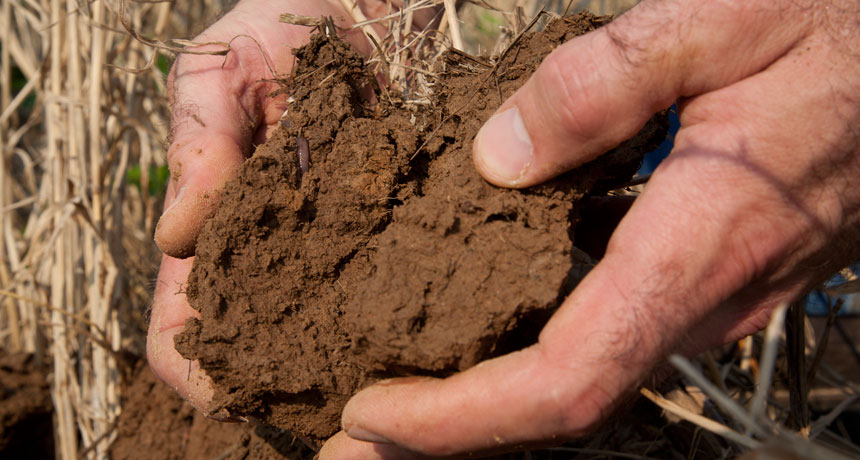Questions for ‘The dirt on soil’

An employee of the U.S. Department of Agriculture examines a soil sample. At this Virginia farm, scientists study conservation practices that can protect and enhance soil and other natural resources.
Lynda Richardson, USDA Natural Resources Conservation Service